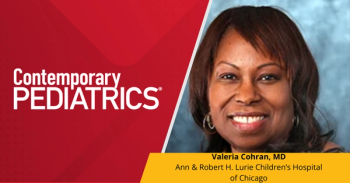
- July 2021
- Volume 38
- Issue 7
Gastrointestinal disorders: Red flags and best treatments
Gastrointestinal concerns are a common reason for a child's visit. This article offers a review of the most common ailments that may lead to that visit.
The most common gastrointestinal (GI) ailments seen by a pediatrician include abdominal pain, diarrhea, vomiting, constipation, failure to gain weight, and feeding problems. This review focuses on their presentations.
Abdominal pain
Chronic, functional abdominal pain occurs in about 15% of all children.1 However, chronic abdominal pain in the absence of red flags is rarely associated with organic disease (Table 1). In addition to eliciting the presence of red flags, certain symptoms are less likely to be associated with organic disease: pain lasting less than 5 minutes at a time (even when it occurs multiple times a day), pain upon waking, and pain when going to bed. The closer the pain is to the umbilicus the less likely it is to be organic. Also, nocturnal wakening with pain is not necessarily a sign of organic disease.
Every child with chronic abdominal pain should have a thorough history and physical examination, and most children should undergo screening for organic disease (see a “Guide to GI screenings and more”). In addition, details regarding changes of the pain when eating and stooling should be elicited. When the pain changes with intake of all food, the child either has either some form of gastroesophageal disease or functional dyspepsia. One should consider screening for Helicobacter pylori and then subspecialty referral. If the pain improves with stooling, it is either functional constipation (pain improves with laxative therapy) or irritable bowel syndrome (pain may or may not improve with laxative therapy). When the pain is centrally located and does not vary with meals or stooling, it is consistent with functional abdominal pain.
It is important to provide a symptom-based diagnosis of functional pain to the child and the family. These disorders are now considered to be disorders of gut-brain interaction and should not be presumed to be made up or in the child’s head. Acknowledging the real nature of the symptoms can be helpful, along with emphasizing that the situation is not dangerous and many children will get better. Suggest making lifestyle changes as the first approach and then offer second-line options.
When the symptoms are mild and early in the course of chronic pain, simple lifestyle changes can suffice. The family should understand that keeping the child functional will lessen the pain and not vice versa (eg, having a child go to school regularly will decrease pain.) Caregivers should be taught to deal with pain complaints empathetically but not focus excessively on it.
In general, the 4 S’s form the cornerstone of management: school, sports, sleep, and social activities. Despite the pain, the child should go to and remain in school (can be done gradually if needed). The child should have some form of physical activity for 1 hour a day, perhaps starting with 5 minutes a day and gradually increasing. The child should have a regular sleep schedule, and get at least 8 hours of sleep each night. Finally, social activities with the child’s friends and others should be encouraged.
Some children develop symptoms of autonomic dysfunction, typically manifested by dizziness, which occurs particularly with positional changes. Consuming 60 oz of water per day can help ease symptoms by lessening postural symptoms associated with hypo-hydration.
In children with more severe symptoms, cognitive behavioral therapy and hypnotherapy have been shown to be helpful. Coexisting anxiety and/ or depression can be harbingers of long-term problems with abdominal pain and should be treated. These children should be seen by a pediatric gastroenterologist and/or receive comprehensive care through a comprehensive pain management clinic.
Abdominal migraine is a specific type of abdominal pain that is episodic. It is related to migraine headaches and cyclic vomiting syndrome (CVS) and can be the pain equivalent of CVS. It is generally treated the same way as migraine headaches.
Abdominal wall pain is common but frequently underrecognized. It worsens with movement, but typically there are no symptoms pertaining to the digestive tract. The pain may be very localized and worsens with tensing of the abdominal muscles. It can respond to nonsteroidal anti-inflammatory drugs, but occasionally children require a local anesthetic injection.2
Diarrhea
Diarrhea is generally considered chronic when it lasts longer than 4 weeks. There are innumerable causes of chronic diarrhea, and only the most common causes in children older than 6 months will be discussed here. Chronic diarrhea in young infants is best dealt with by a pediatric gastroenterologist.
Lactose intolerance is common in non-White children and typically develops after age 2 years.3 Apart from causing diarrhea, ingestion of milk or other dairy products can result in flatulence, abdominal pain, and bloating. It can be managed by restricting lactose in the diet or administering lactase when the child consumes lactose. A child who avoids dairy products should be given calcium and vitamin D supplements.
Postinfectious diarrhea is the persistence of diarrhea after an infection.4 It is typically caused by transient loss of lactase and may respond to temporary lactose restriction—or it might not respond and can last months. These children likely need to undergo screening for organic disease including a stool calprotectin, but if growth is unaffected and screening markers are negative, no specific intervention is needed.
A variety of medications including antibiotics can provoke diarrhea. When it is antibiotic induced—and even when it is not—Clostridioides difficile infection must be ruled out.
Toddler diarrhea is a common cause of chronic diarrhea in children aged 6 months to 5 years. The stools can vary from semisolid to loose and may contain undigested food. It is likely that this type of diarrhea is related to unabsorbed sugars such as fructose or sorbitol, but it may or may not respond to dietary restriction of these sugars. If the child is growing and has no other symptoms, no specific testing/therapy is recommended.
Certain immune causes should always be considered in any child with chronic diarrhea. Celiac disease should be ruled out in children who are consuming gluten irrespective of the presence of other symptoms. Food protein–induced proctocolitis, a common problem in infants, is usually triggered by exposure to cow’s milk protein (or another antigen) and causes either blood in the stool or bloody diarrhea. It usually resolves by age 1 year.5 Chronic food protein–induced enterocolitis, which is less common, can cause chronic diarrhea, vomiting, and poor weight gain and typically resolves by age 3 years.5 Inflammatory bowel disease should be considered in all children with chronic diarrhea with hematochezia, growth concerns, and abdominal pain with red-flag symptoms (Table 1). Except for infantile food protein–induced proctocolitis, all other causes of immune diarrhea need subspecialty referral.
Vomiting
Recurrent vomiting can be chronic or cyclic. Some of the more common red flag symptoms are shown in Table 2. Chronic vomiting presents with daily emesis. These children have 1 to 2 emeses per day and are not very ill or dehydrated. GI causes predominate among the causes of recurrent emesis. Common among these are eosinophilic esophagitis, peptic ulcer disease, and Crohn disease. Psychobehavioral causes, such as rumination and bulimia nervosa, can also cause recurrent vomiting. Rumination is not an uncommon cause of what appears to be vomiting.6 It is repeated painless regurgitation and either chewing or expulsion of food that usually occurs soon after a meal and not during sleep. There is no retching seen. Children usually respond well to behavioral therapy in the form of diaphragmatic breathing.
Regurgitation occurs when food is brought into the stomach without the muscular activity seen in vomiting. It is commonly seen in infantile gastroesophageal reflux (GER), typically peaking around 4 months of age and subsiding by 1 year. “Happy spitters” do not require further investigation or treatment. When children who appear to have GER exhibit other symptoms such as poor weight gain, irritability, and fussiness, it may be reasonable to attempt thickening of the feeds.7 If this does not help and particularly if there is a strong family history of atopy, a trial of a hydrolysate formula can be considered.7 Acid blockade, particularly with proton pump inhibitors, is unlikely to benefit these infants. When symptoms of GER persist beyond 18 months, the child should be referred to a pediatric gastroenterologist.
Most older children with recurrent emesis should also be referred to a pediatric gastroenterologist.
With cyclic vomiting, children have intermittent episodes of large numbers of emesis associated with pallor, listlessness, and dehydration.8 Non-GI causes tend to predominate; about one-third of these patients have CVS, a condition related to migraine. Episodes are stereotypical or resemble each other. This episodic pattern of vomiting also can be seen in renal (acute hydronephrosis from uretero-pelvic obstruction), endocrine (diabetic ketoacidosis, Addison disease), or metabolic disorders.
Children with cyclic vomiting should undergo an upper GI study to rule out malrotation. This should also be done in children with recur- rent emesis because volvulus caused by malrotation, although rare, is a potentially preventable life-threatening condition. Children with cyclic vomiting should also have a renal ultrasound. CVS is typically treated with antimigraine medications and should be managed by a pediatric gastroenterologist.
Constipation
Constipation affects up to 30% of children and accounts for about 5% of all visits to pediatricians. Function- al constipation is responsible for the vast majority (> 95%) of cases in otherwise healthy children 1 year and older and is particularly common during the preschool years. It is typically diagnosed by the presence of hard, painful stools that are difficult to pass and can be accompanied by retentive posturing.
All children with constipation should be assessed for red-flag symptoms (Table 3).9 Their growth should be assessed and, apart from a thorough abdominal examination, should undergo an examination of the lower spine and the perianal region. Ideally, a rectal examination also will be done. In functional constipation, apart from fecal masses in the abdomen and a firm fecal mass at the anal verge, findings should be normal. Children with red-flag symptoms or signs should be referred to a pediatric surgeon or pediatric gastroenterologist as appropriate.
Caregivers of children with functional constipation should be educated on the pathophysiology of the condition (a YouTube video found at tinyurl.com/pooinyou can be helpful). The child should then be cleaned out to begin the treatment. This is best accomplished with 2- or 3-times-daily doses of polyethylene glycol after which the child should be placed on a daily dose of polyethylene glycol and encouraged to sit on the toilet twice daily after meals. The laxative therapy should be continued for at least 12 to 24 months, and the toilet sitting should become part of the child’s daily routine. Toilet training should be deferred until the child is having regular, painless, soft-to-loose stools daily, and laxative therapy should be continued for 3 to 6 months after toilet training is accomplished.
Failure to gain weight
This condition is referred to as failure to thrive or malnutrition. There are now new criteria for malnutrition based on z scores.10 Children should be considered malnourished when their weight-for-length z score (for children under age 2) or body mass index–for-age z score is less than 2 (second percentile). Poor weight gain is usually caused by insufficient intake in calories. Most children do not need a work-up unless they do not respond to first-line therapies (see Table 4).
When children do not respond to these therapies or exhibit other signs of chronic disease, screening laboratory studies may be needed. These should include complete blood cell count, metabolic panel, erythrocyte sedimentation rate, and C-reactive protein. Children consuming gluten should be screened for celiac disease. Those who are not responding to first-line therapies or have positive screening labs need referral to a pediatric gastroenterologist.
Feeding disorders
Pediatric feeding disorder (PFD) has been defined as impaired oral intake that is not age appropriate and is associated with medical, nutritional, feeding skill, and/or psychosocial dysfunction.11 PFD is common and seen in roughly 1 of 30 young children and in 1 of 4 young children with other chronic diseases; it often coexists with malnutrition.
Infants who exhibit feeding problems should be evaluated by a speech-language pathologist or occupational therapist with experience in this area. Older children should, ideally, be evaluated by specialists in all 4 of the disciplines in which dysfunction can be seen in children with PFD: a pediatric gastroenterologist, a dietitian, a speech-language pathologist, and a pediatric psychologist.
References
1. Korterink JJ, Diederen K, Benninga MA, Tabbers MM. Epidemiology of pediatric functional abdominal pain disorders: a meta-analysis. PLoS One. 2015;10(5): e0126982. doi:10.1371/journal.pone.0126982
2. Sweetser S. Abdominal wall pain: a common clinical problem. Mayo Clin Proc. 2019 Feb;94(2):347-355. doi:10.1016/j.mayocp.2018.04.031
3. Berni Canani R, Pezzella V, Amoroso A, Cozzolino T, Di Scala C, Passariello A. Diagnosing and treating intolerance to carbohydrates in children. Nutrients. 2016;8(3):157. doi:10.3390/nu8030157
4. Lee YY, Annamalai C, Rao SSC. Post-infectious irritable bowel syndrome. Curr Gastroenterol Rep. 2017;19(11):56. doi:10.1007/s11894-017-0595-4
5. Sicherer SH, Warren CM, Dant C, Gupta RS, Nadeau KC. Food allergy from infancy through adulthood. J Allergy Clin Immunol Pract. 2020;8(6):1854-1864. doi:10.1016/j.jaip.2020.02.010
6. Murray HB, Juarascio AS, Di Lorenzo C, Drossman DA, Thomas JJ. Diagnosis and treatment of rumination syndrome: a critical review. Am J Gastroenterol. 2019;114(4):562-578. doi:10.14309/ajg.0000000000000060
7. Rosen R, Vandenplas Y, Singendonk M, et al. Pediatric gastroesophageal reflux clinical practice guidelines: joint recommendations of the North American Society for Pediatric Gastroenterology, Hepatology, and Nutrition and the European Society for Pediatric Gastroenterology, Hepatology, and Nutrition. J Pediatr Gastroenterol Nutr. 2018;66(3):516-554. doi:10.1097/MPG.0000000000001889
8. Li BUK. Managing cyclic vomiting syndrome in children: beyond the guidelines. Eur J Pediatr. 2018;177(10):1435-1442. doi:10.1007/s00431-018-3218-7
9. Tabbers MM, DiLorenzo C, Berger MY, et al. Evaluation and treatment of functional constipation in infants and children: evidence-based recommendations from ESPGHAN and NASPGHAN. J Pediatr Gastroenterol Nutr. 2014;58(2):258-274. doi:10.1097/MPG.0000000000000266
10. Becker P, Carney LN, Corkins MR, et al. Consensus statement of the Academy of Nutrition and Dietetics/American Society for Parenteral and Enteral Nutrition: indicators recommended for the identification and documentation of pediatric malnutrition (undernutrition). Nutr Clin Pract. 2015;30(1):147-161. doi:10.1177/0884533614557642
11. Goday PS, Huh SY, Silverman A, et al. Pediatric feeding disorder: consensus definition and conceptual framework. J Pediatr Gastroenterol Nutr. 2019;68(1):124-129. doi:10.1097/MPG.0000000000002188
12. Snyder J, Butzner JD, DeFelice AR, et al. Evidence-informed expert recommendations for the management of celiac disease in children. Pediatrics. 2016;138(3):e20153147. doi:10.1542/peds.2015-3147
13. Walker GJ, Chanchlani N, Thomas A, et al. Primary care faecal calprotectin testing in children with suspected inflammatory bowel disease: a diagnostic accuracy study. Arch Dis Child. 2020;105(10):957-963. doi:10.1136/archdischild-2019-317823
14. Ruffner MA, Spergel JM. Eosinophilic esophagitis in children. Curr Allergy Asthma Rep. 2017;17(8):54. doi:10.1007/s11882-017-0721-2
15. Sorensen CJ, DeSanto K, Borgelt L, Phillips KT, Monte AA. Cannabinoid hyperemesis syndrome: diagnosis, pathophysiology, and treatment-a systematic review. J Med Toxicol. 2017;13(1):71-87. doi:10.1007/s13181-016-0595-z
Articles in this issue
over 4 years ago
Allergies, asthma, and climate changeover 4 years ago
A newborn with fever and tremorsover 4 years ago
A case of lime diseaseover 4 years ago
Keeping your child safe from COVID-19 this summerover 4 years ago
Adjunctive medications for epilepsyover 4 years ago
Helping parents cope with adolescent behaviorover 4 years ago
Good quality of life may help overcome food allergyover 4 years ago
Participation in after-school activities decreases ADHD severityNewsletter
Access practical, evidence-based guidance to support better care for our youngest patients. Join our email list for the latest clinical updates.








